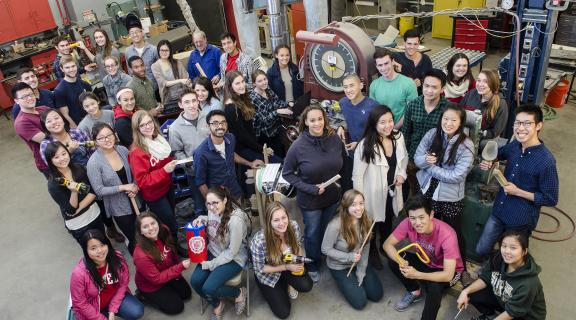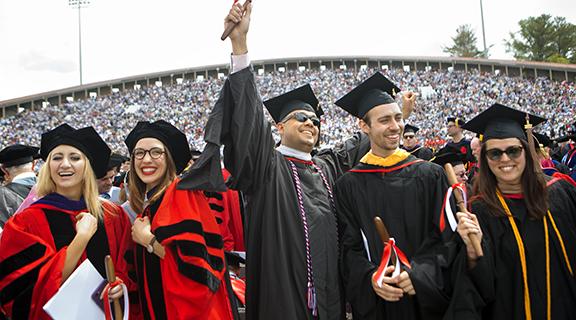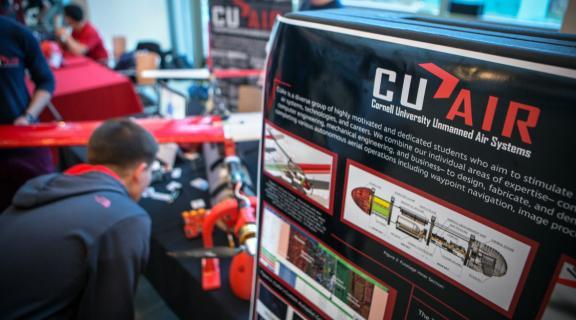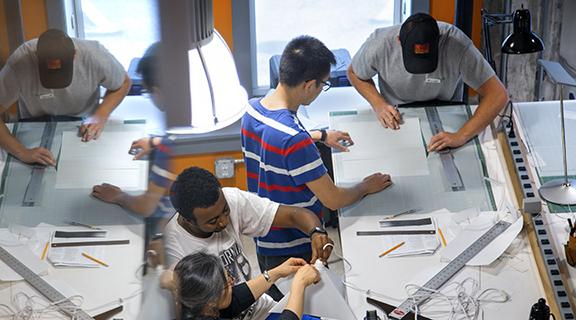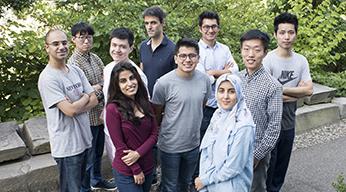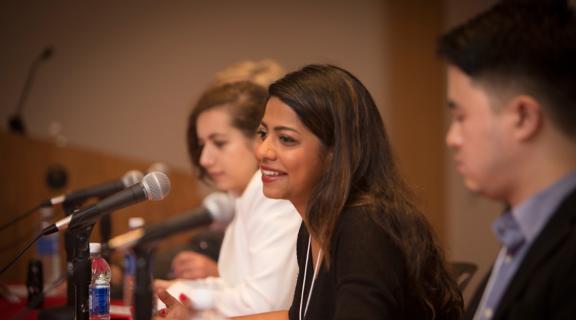
Admissions
Why Cornell Engineering?
"Scientists study the world as it is; engineers create the world that never has been."—Theodore von Karman
Cornell engineers challenge the status quo and do great things. Steeped in an environment of questioning, and with a focus on innovation, Cornell Engineering pursues excellence in all areas. Its faculty, students, and alumni design, build, and test products, improve the world of medicine, inform and shape our laws, create and drive businesses, become research luminaries, and overcome real and perceived barriers to achieve scientific breakthroughs that advance the quality of life on our planet.
We invite you to learn more about Cornell Engineering and its programs.
Did you know?
Padmasree Warrior (Chemical Engineering, M.S., 1984) in 2013 and 2014 was named as one of the top 100 powerful women in the world by Forbes Magazine. She is the chief technology and strategy officer at Cisco shaping technology development and corporate strategy.
In 1993, Prof. Darrell Schlom, his MSE undergraduate student were the first to suggest the stability of the HfO2/Si interface. This research enabled faster computing while helping the then-$300 billion a year semiconductor industry to keep growing.
In the early 1980s, Prof. Stephen Pope published a landmark study of probability density function methods for tracking turbulent combustion. It was not until 25 years later that commercial technology caught up with Pope and industry began using what he had learned as the basis for their commercial codes.
Gerald Rehkugler, a faculty member since 1958 and Professor Emeritus of Biological and Environmental Engineering, developed a rollover-protection system for tractors that have become a standard feature to all tractors.
1967 – Dick Conway, Bill Maxwell (both Cornell faculty), and Miller publish their landmark text, Theory of Scheduling, which placed on a formal foundation the study of the entire area of production scheduling. In the decades that followed, the automatic scheduling of computers, transportation models, and eventually all aspects of industrial production are shaped by the directions outlined in this book.


